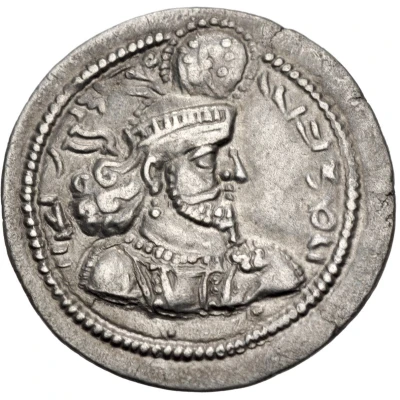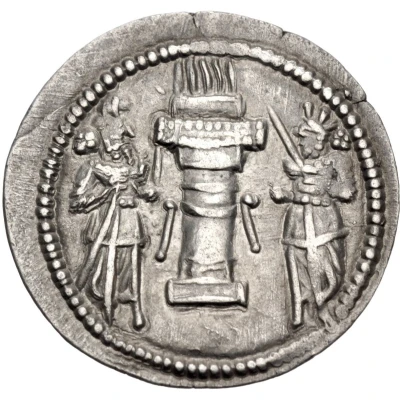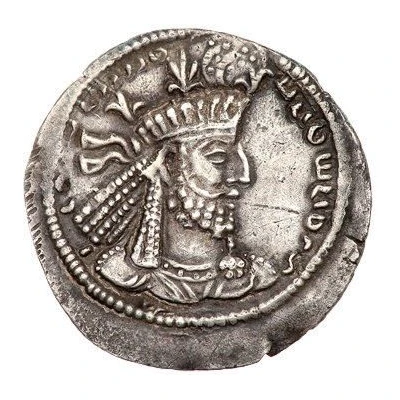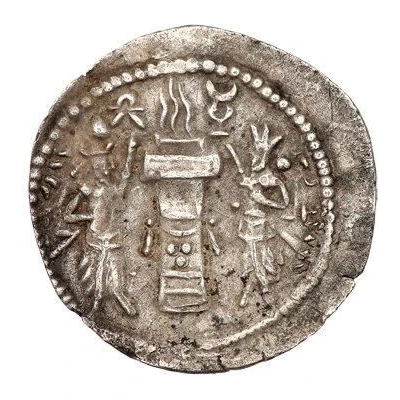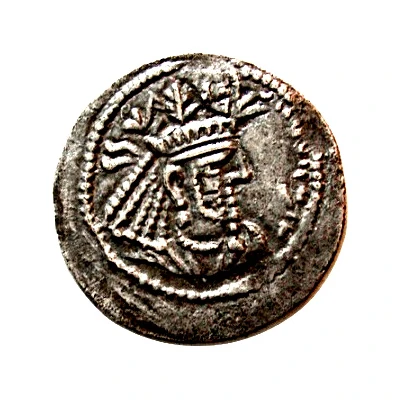
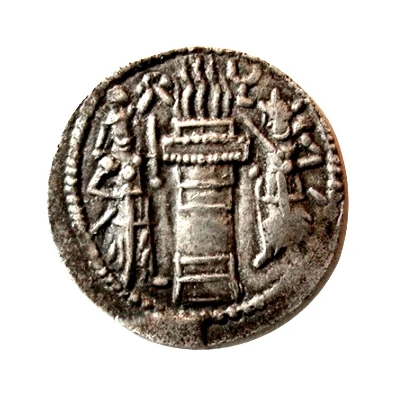

Obol - Narseh type II/
| Silver (.900) | 0.64 g | 15 mm |
| Issuer | Sasanian Empire (Sasanian Empire (224-651)) |
|---|---|
| Emperor | Narseh (293-302) |
| Type | Standard circulation coin |
| Years | 293-303 |
| Value | Obol (1⁄72) |
| Currency | Dinar (224 AD-651 AD) |
| Composition | Silver (.900) |
| Weight | 0.64 g |
| Diameter | 15 mm |
| Shape | Round (irregular) |
| Technique | Hammered |
| Demonetized | Yes |
| Updated | 2024-10-10 |
| Numista | N#87773 |
|---|---|
| Rarity index | 100% |
Reverse
An atasdan in the form of column with a base and capitellum. The column is covered by ribbons with bands. Along the two sides of atasdan there are two attendants with swords in their hands. The figure on the left wears a crown with a globe, the one on the right is Ahura-Mazda. To the left of the fire there is a "royal sign", on the right-hand side is a "sign of the heir to the throne"
Interesting fact
One interesting fact about the Obol - Narseh (type II/2) coin is that it features a unique blend of Persian and Roman influences in its design. The coin's obverse (front) side features a crowned bust of King Narseh, while the reverse (back) side depicts a stylized representation of the Roman goddess Victory, highlighting the cultural exchange and artistic fusion that occurred during the Sasanian Empire's period of Roman-Sasanian rivalry.
